MARIANI’S
Virtual
Gourmet
March 12, 2023
NEWSLETTER
THIS WEEK
ORIENTA
Greenwich, Connecticut
By John Mariani
NEW YORK CORNER
CASA TULUM
By John Mariani
GOING AFTER HARRY LIME
CHAPTER ELEVEN
By John Mariani
NOTES FROM THE WINE CELLAR
By John Mariani
 Thomas Moretti about Who Was
the Real William Shakespeare? Go
to: WVOX.com.
The episode will also be archived at: almostgolden.
Thomas Moretti about Who Was
the Real William Shakespeare? Go
to: WVOX.com.
The episode will also be archived at: almostgolden.
ORIENTA
55 Lewis
Street
Greenwich,
CT
203-489-3394
By John Mariani

Circuitous are the ways restaurants
are conceived, none more so than Orienta,
which originally debuted in Manhattan in 1995
and is now set on Long Island Sound in a small
space whose interior would look just as
seductive on the Saigon River. Shadowy, but
richly colorful with pink and green palm
wallpaper, lipstick red banquettes, white
tablecloths, Venetian blinds and a cartoon of
a dog wearing a nón lá “leaf
hat,”
it’s a place where you
half expect Michael Caine to show up wearing a
khaki shirt with a gorgeous Vietnamese woman
in a silk ao dai
tunic. Slowly turning ceiling fans would be a
nice touch.
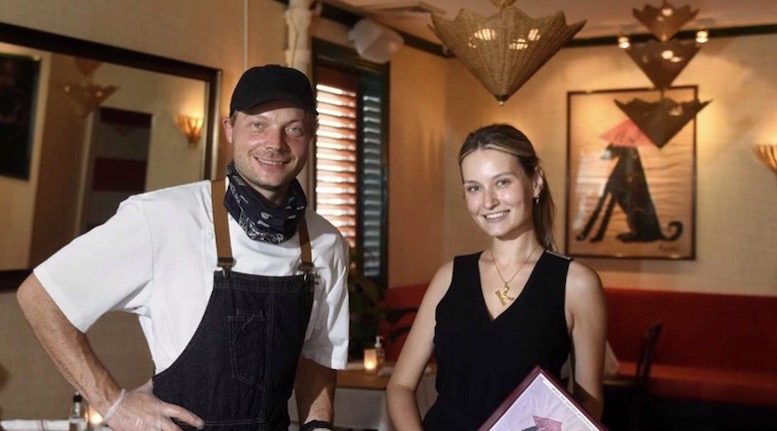 Instead,
you are greeted by a beautiful blonde Russian,
Kate, wife of chef Adrien Blech and
daughter-in-law (left) of the owners,
Antoine and Suzanne Blech, who are French. The
loud American music doesn’t quite fit the
scenario, nor does the blasting of “HAPPY
BIRTHDAY” for a celebrant. But Orienta is
otherwise a very warm and inviting room, with a
good bar and exotic cocktails.
Instead,
you are greeted by a beautiful blonde Russian,
Kate, wife of chef Adrien Blech and
daughter-in-law (left) of the owners,
Antoine and Suzanne Blech, who are French. The
loud American music doesn’t quite fit the
scenario, nor does the blasting of “HAPPY
BIRTHDAY” for a celebrant. But Orienta is
otherwise a very warm and inviting room, with a
good bar and exotic cocktails.
I don’t usually cite individual waiters
for praise, but ours, named Michael, was as fine
a server as I can recall, as fully in command of
the menu and wine list as he was helpful and
friendly without crossing into being your pal.
The elder Blech, a musician, had
previously worked at New York’s French bistro Le
Bilboquet and the swanky French-Vietnamese Le
Colonial before opening the first Orienta in
Manhattan (now closed). 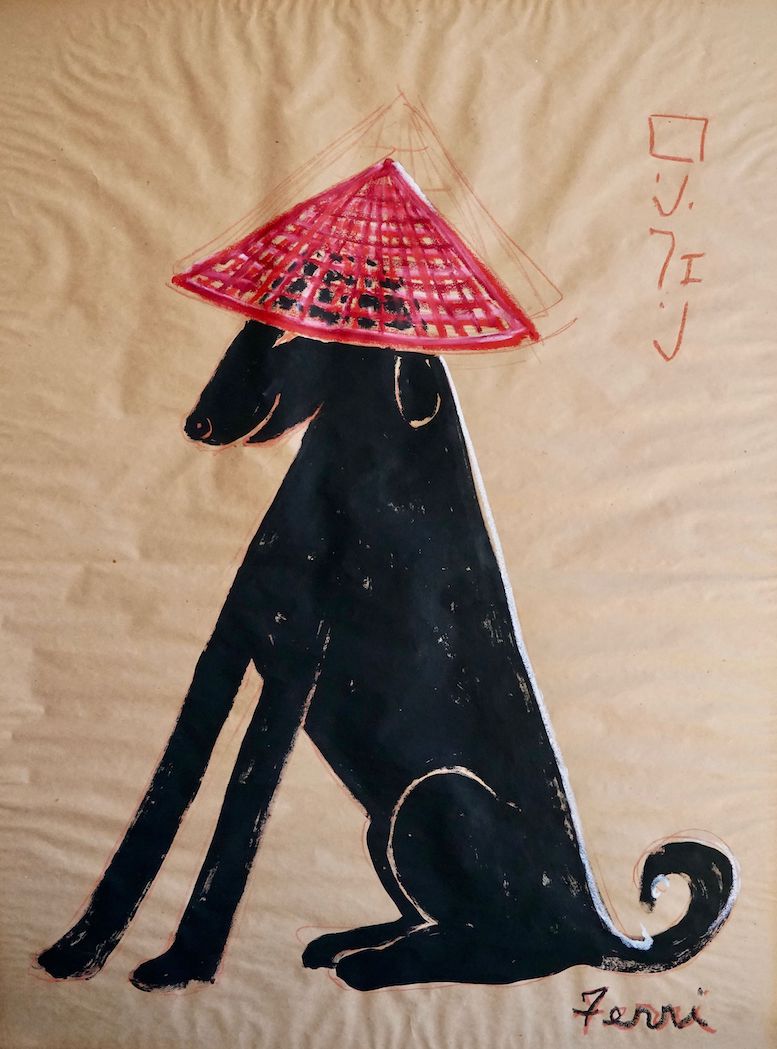 Now, with
Suzanne, he also runs the French bistro Le
Penguin next door and Le Fat Poodle in town.
When in the dining room he adds a good dose of
Gallic savoir-faire to the evening.
Now, with
Suzanne, he also runs the French bistro Le
Penguin next door and Le Fat Poodle in town.
When in the dining room he adds a good dose of
Gallic savoir-faire to the evening.
The younger Blech has done stints at Le Bernardin, Soho
House LA, Le Royal Monceau, Guy Savoy and his
parents’ other two restaurants. Yet,
he has never set foot in Asia, instead learning
from all his father had while working in New
York. To Asian dishes, then, he adds French
precision, both in flavors and presentations.
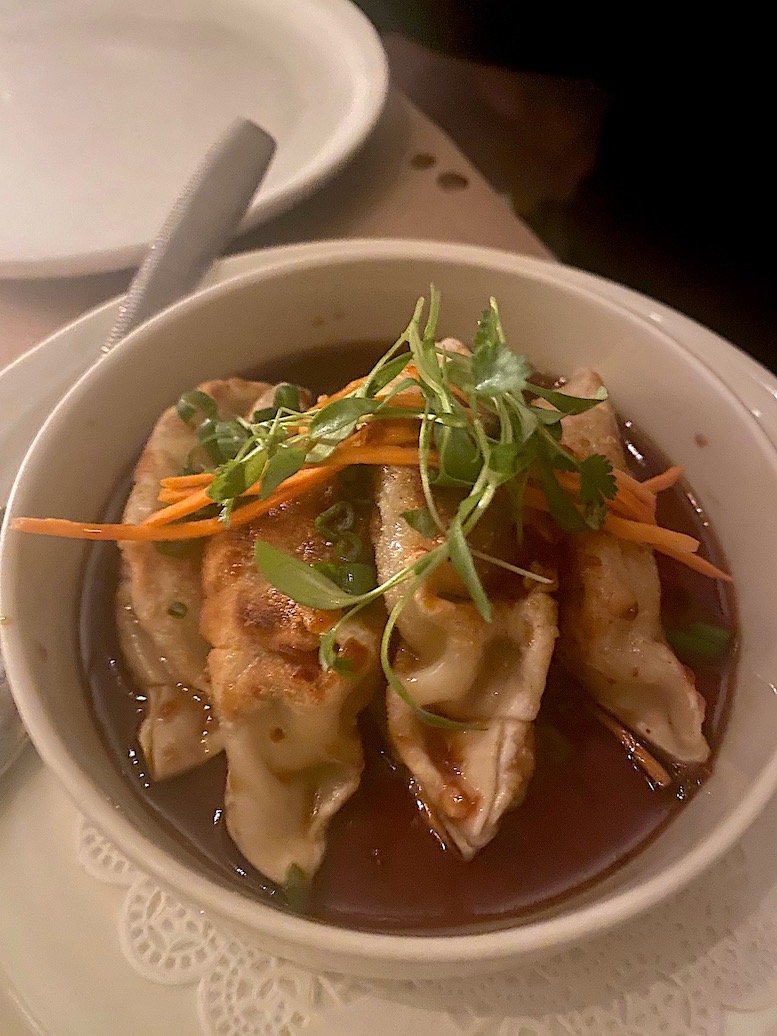 The menu is
admirably just the right size for a table of
four to sample a wide array of dishes, from
dumplings to pho, and not everything on it is
Vietnamese. It should be noted that Vietnamese
cuisine was highly influenced by French cooks
when the country was dubbed Indochina as a
French colony, and there is little of the
chile-based heat you find in the food in China
and Thailand.
The menu is
admirably just the right size for a table of
four to sample a wide array of dishes, from
dumplings to pho, and not everything on it is
Vietnamese. It should be noted that Vietnamese
cuisine was highly influenced by French cooks
when the country was dubbed Indochina as a
French colony, and there is little of the
chile-based heat you find in the food in China
and Thailand.
An
irresistible starter is a good portion of the
“Rockstar shrimp” ($26), with a crisp iceberg
lettuce and a sweet chili sauce, fit for four
people to pop in their mouths. Hamachi
crudo ($22) has a fine luster, sparked
with moderately spicy Fresno chili avocado and
cucumber with a yuzu
dressing. It’s difficult for me ever to say no
to baby back ribs, and Orienta’s are delicious
($23), very tender and meaty, with Japanese
barbecue sauce and cabbage slaw. 
We ordered an array of pan-fried
dumplings, one with Napa cabbage, carrots and a
special house dipping sauce with fried shallots
and coriander ($14) as were pork dumplings
($16). Unexpected and highly recommended was a
serving of silky eggplant roasted in Japanese
style ($10).
As noted, portions are generous, which
goes for the main courses, like the sea bass
($36) and the lovely presentation of the white
salt and pepper cod ($37) with toasted sesame
fried rice, broccolini, carrots and snow peas (right). A big
bowl of garlic fried rice is not to be missed as
a side dish ($10). Saigon chicken—half a bird—
is caramelized, then grilled to crispiness,
served with sautéed pea shoots ($30). Star anise
in a dark reduction buoys a breast of duck with
Thai chilies and pea tendrils ($38).
The only dish that was bland, perhaps by
comparison, was the Vietnamese pho
($30) with a choice of chicken, shrimp or beef.
A shot of that special sauce might improve it
measurably.
 Asian
desserts on their own are afterthoughts in most
restaurants, but Orienta’s Key lime pie ($15),
Mandarin chocolate mousse with a heaping of
whipped cream and candied orange ($15) and
coconut panna cotta ($15) are all well worth
ordering, with two forks or spoons.
Asian
desserts on their own are afterthoughts in most
restaurants, but Orienta’s Key lime pie ($15),
Mandarin chocolate mousse with a heaping of
whipped cream and candied orange ($15) and
coconut panna cotta ($15) are all well worth
ordering, with two forks or spoons.
Orienta’s wine list is of sufficient size
and range for food with this kind of seasoning
and spice, not least a fine red Sancerre ($68;
about $30 in a wine shop).
One easy-to-fix peccadillo: Throughout
our meal the table was never crumbed, and with
these sauces and finger foods, it can get messy,
especially by dessert.
As a family
affair, Orienta works in a way that is palpable
from the greeting through the end of the meal.
But please don’t ask for the birthday song,
which is not really either a French or
Vietnamese tradition.
❖❖❖
CASA TuLuM
229 FRONT STREET
212-433-5800
As noted last week, some of the most
exciting and stylish new restaurants in New York
are Mexican, and Americans’ familiarity with the
food and conviviality is always part of the
draw. Let’s face it, the mere idea that there
will be a margarita and a bowl of chips in front
of you soon after you sit down (not something
you expect at a sushi bar) is magnetic enough,
and the food in even Tex-Mex places is easy to
love.
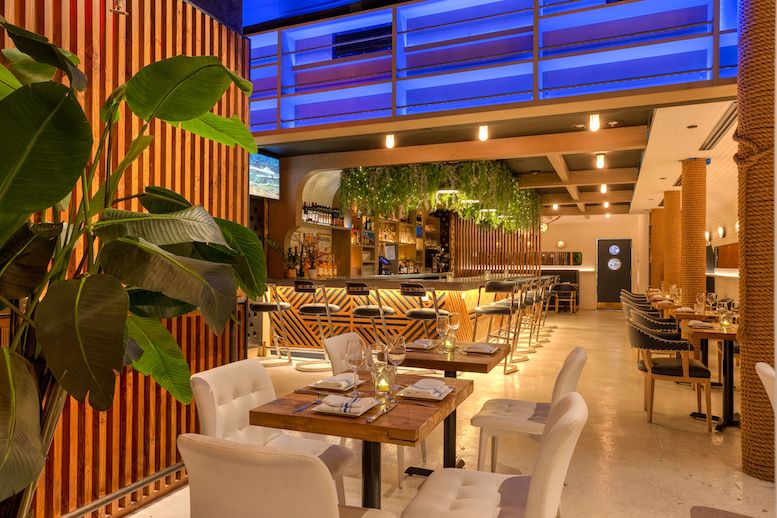 When a new
place like Casa TuLuM adds to the expectations a
striking décor, exceptional service and authentic
Mexican food that has been refined but is not
intimidating—no grasshoppers or worms on the
menu—it is well worth a trip to the increasingly
delightful South Street Seaport neighborhood.
When a new
place like Casa TuLuM adds to the expectations a
striking décor, exceptional service and authentic
Mexican food that has been refined but is not
intimidating—no grasshoppers or worms on the
menu—it is well worth a trip to the increasingly
delightful South Street Seaport neighborhood.
There is a clear personal touch to
everything that Managing Partner Luis Villanueva
and Chef/Partner Rodrigo Abrajan (from Puebla,
Mexico, starting in New York with an East Harlem
taco cart) bring
to TuLuM, whose décor resembles a swank beach
house in the Yucatán with effulgent hanging
plants, natural wood slats, leather chairs and
videos of Gulf of Mexico beach scenes. And, much
to my applause, tablecloths. When I visited the
noise level was moderate, with just 55 seats and
15 at the bar, especially the anteroom to the
rear. At the bar some booming music intrudes.
The menu is in three sections, beginning
with very good traditional guacamole with freshly
made corn chips ($16); even
better is the King guacamole ($20) that
incorporates crabmeat, crisp jicama and habanero
chilies (below). These are
made for the whole table.
These are
made for the whole table.
What makes TuLuM distinctive is not so much
novelty as it is the fine tuning, with the best
imported ingredients and an attention to layers of
flavors and textures not easily found elsewhere in
New York. A fine example is the aguachile
($31) of both raw and cooked shrimp, octopus,
cherry stone clams, lime juice and seven dried
chilies with red onions cucumbers and avocado that
you scoop up and get waves of tastes on your
pallet. Ceviche TuLuM ($20) is similar but
simpler, with raw Gulf shrimp
with avocado, habanero and cilantro.
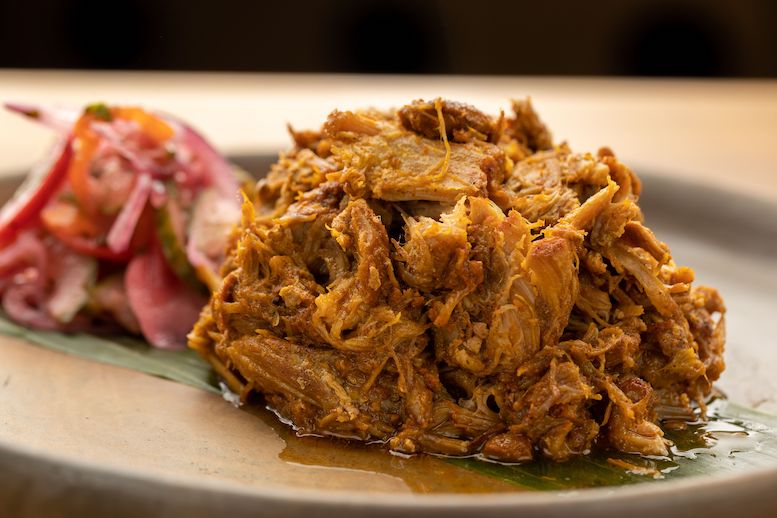 Lobster
ceviche ($31) is worth every penny—every dish is
meant to be shared—marrying good morsels of
lobster with passion fruit and litchi, Mango, chile arbol,
crunchy, sweet pomegranate seeds and baked
multi-grain tostados, which makes my claim about
the textures quite clear. In the pincho tacos
section you definitely should order the
“Governador” ($24), two tortillas bulked up with
both shrimp and steak, Chihuahua cheese gratin,
and chiltepin
tomato salsa. The choice of different chilies for
their
Lobster
ceviche ($31) is worth every penny—every dish is
meant to be shared—marrying good morsels of
lobster with passion fruit and litchi, Mango, chile arbol,
crunchy, sweet pomegranate seeds and baked
multi-grain tostados, which makes my claim about
the textures quite clear. In the pincho tacos
section you definitely should order the
“Governador” ($24), two tortillas bulked up with
both shrimp and steak, Chihuahua cheese gratin,
and chiltepin
tomato salsa. The choice of different chilies for
their sweetness, toastiness, smokiness and heat, is
critical to Abrajan’s cooking and makes all the
difference.
sweetness, toastiness, smokiness and heat, is
critical to Abrajan’s cooking and makes all the
difference.
Dishes get still
heartier in the Los Platos Fuertes section,
starting with traditional enchiladas
suizas (right) made with juicy
chicken (so often it comes dry) with tomatillo,
Serrano creamy salsa, and a blend of melted
cheeses ($26).
Pescado
Zarandeado ($36) is a simply grilled
branzino that takes on savory sparks from a
marinade of annatto
and guajillo
chilies, while a duck mole
($41) begins with the bird marinated with
coffee-flavored
sauce and then made more delicious with
plantains and Mexican rice. One of the most
identifiable Yucatán dishes is cochinita
pibil ($32), pork shoulder roasted for a
long time in banana leaves with achiote
paste, cured lime, onion, and habanero chili tetemado (above).
Even with a big appetite, you may find
yourself sated by then, but do share a sumptuous
dessert, especially any made with Mexican
chocolate.
I
haven’t been to America’s southwestern cities
recently to see if they are getting more Mexican
restaurants at Casa TuLuM’s level of innovation,
but it’s indicative of the unending variety of New
York’s gastronomy that food and décor of this
caliber is down at the once sleepy South Street
Seaport.
Open nightly for
dinner.
❖❖❖
GOING AFTER HARRY LIME
By John Mariani

CHAPTER ELEVEN
 As
David was on his way to the National Archives
that morning,
Katie was on hers to interview the
novelist with the woman’s first name, Evelyn
Dawes, after having checked his work. It
appeared, like many English littérateurs, Dawes
had written everything from novels to
biographies, histories and literary criticism.
Most writers lived on dribs and drabs of money,
but, while American writers tended to be
pigeonholed by publishers as fiction or
non-fiction, the Brits were able to take on work
in a wide range of genres. In the end, the money
came to much the same, which was rarely very
much at all.
As
David was on his way to the National Archives
that morning,
Katie was on hers to interview the
novelist with the woman’s first name, Evelyn
Dawes, after having checked his work. It
appeared, like many English littérateurs, Dawes
had written everything from novels to
biographies, histories and literary criticism.
Most writers lived on dribs and drabs of money,
but, while American writers tended to be
pigeonholed by publishers as fiction or
non-fiction, the Brits were able to take on work
in a wide range of genres. In the end, the money
came to much the same, which was rarely very
much at all.
Dawes had had a reputation for a few
mystery novels he’d written in the 1960s—The
Incident in Alghero and Something
at the Beach were his two most popular—but
nothing of his work, except book reviews and
essays in the London papers, had been published
for more than a decade.
The book
editor at McClure’s said Dawes had drunk
away a lot of the good will he once enjoyed among
the literary establishment, and now, on the wagon
for five years, he had little to look forward to
at six each evening, except watching the BBC.
Still, the editor had told Katie, his mind was
sharp and his memory for detail prodigious. Most
important,  Dawes had been a close
friend of Graham Greene up until his death.
Dawes had been a close
friend of Graham Greene up until his death.
Dawes had lived since the 1960s on Margery
Street in Clerkenwell, Central
London, once an industrial area that had begun to
gentrify in the 1980s, and his flat had been part
of a well proportioned segmented loft. Katie
was there on time, ten o’clock, and rang the bell
of the second-story flat several times before an
elderly voice answered through an intercom and
without asking who was ringing or identifying
himself said, “I’ll need about ten minutes to put
myself together. Please be so kind as to call back
then.”
“Late riser,” Katie said to herself, or
Dawes had forgotten about their appointment. She
took the time to walk a block or two, found a
Caffé Nero and nursed a cappuccino while going
over notes. She gave Dawes five minutes’ grace and
rang his doorbell again.
“Yes?”
“Mr. Dawes, it’s Katie Cavuto, from the
States.”
There was a pause, then, “Ah, yes, yes, of
course. So sorry, Miss Cavuto. Yes, I knew you
were coming but I got up a bit late and needed to
shake the cobwebs out first.”
“Not a problem,” said Katie. “Do you need
some more time?”
“No, no, come on up,”
and the buzzer rang.
The
hallway and stairs in the building had certainly
not gone through gentrification, and Dawes’s gray
metal door looked left over from its industrial
past. There was no doorbell, so Katie knocked,
and, after ten seconds, the door clicked open to
reveal Mr. Evelyn Dawes, all six feet of him.
“Come in, come in, come in,” he said,
pushing aside some papers on the floor. “Place is
a mess. Always is, I’m afraid. All
these damn books gather so much dust and they’re
so damn difficult to clean. Hope you’re not
allergic.”
“Not to book dust,” said Katie, who reveled
in the smell of old books, though she’d never seen
a room with so little else in it except books, not
just on the shelves lining ever square inch of the
walls outside a kitchenette but also piled high on
the floor. She was hardly surprised to find an old
cat of indeterminate color curled on a sofa
between the piles.
“I just made some extra tea for you, in
case you’d like some,” said Dawes, who looked
every bit his seventy-eight years, as did his
clothes, which consisted of a tattersall shirt,
grayish cardigan and brown corduroy slacks. He was
still in his bedroom slippers, which Katie figured
he rarely got out of. His eyes
registered olive green in the dim light of the
place, his hair in disarray, his eyebrows more so.
“Sit down, sit down. May I call you Katie?”
“Please do.”
“Excellent. Call me Evelyn—with a long E.”
For a split second that sounded very
amusing to Katie.
“So, I understand from your friend at McClure’s
magazine you wanted to chat about my friend Graham
Greene?” said the author.
“If we could.”
Dawes waved his hand and said, “Happy to
oblige. One of the best friends I ever had and one
of the few who never betrayed me.”
“Why would he or anyone want to betray
you?” asked Katie.
 “Oh, nothing
sinister. Literary debates, my making one too many
enemies in the establishment press, that sort of
thing. But, yes, Greene always defended me and was
willing to write some very nice things on my
behalf when I was attacked. Capital fellow.”
“Oh, nothing
sinister. Literary debates, my making one too many
enemies in the establishment press, that sort of
thing. But, yes, Greene always defended me and was
willing to write some very nice things on my
behalf when I was attacked. Capital fellow.”
“From all I’ve read, loyalty to his friends
was paramount to Greene.”
Dawes gave his head a vigorous shake and
pounded his fist on a book.
“Absolutely! Paramount is the word. Graham
could attack, bite back, joust with the best of
them, even to the point of some pretty smarmy
gossip. But, when it came to his friends, there
was no wavering, even when he knew the man was a
blackguard. And he knew plenty of them.”
“Well, that’s what I’m looking into,” said
Katie. “I’m trying to find out if Greene had any
personal inspiration among his friends for the
character of Harry Lime in the movie The Third
Man.”
Dawes smiled broadly and arched his head
backwards. “Ah, Harry Lime! My God, what a good
character, so minimally drawn but so magnificently
made flesh by Orson Welles! Did you
know he wrote the most famous lines in the movie?”
“The ones about Switzerland and the cuckoo
clock?”
“Exactly. Brilliant addition. Something
only an American like Harry would say. Graham was
never very good writing American speech. I met
Welles once and congratulated him on his
performance, and of course he reminded me that
he’d written that little speech for Harry. Did you
know Welles went on to do dozens of episodes on
radio as Harry Lime, though not as a criminal?”
“I never knew that. They made a whole radio
show about Lime? Was Greene involved?”
“I doubt it. Graham had gotten too famous
by then to trifle with radio.” (Katie made a note
to look into the show.) “Anyhow,
as to whether Graham based Harry on a real-life
friend of his, well, I’m sure he did, at least
parts of Lime. A lot of people believe it was
Graham’s very, very good friend Kim Philby, whom
he adored. He once told me, ‘I never knew a man who had better
motives for all the trouble he caused’—a line he
later used in one of his novels.”
“I’ve read that,” said Katie, “and I have
to say it confuses me. It seems to me it’s one
thing to love a person, even if that person has
many flaws, but for Greene to continue to go to
bat for a convicted traitor?"
“Well, remember, if I’ve got the dates
right, Philby wasn’t exposed as a traitor for many
years after The Third Man. So, if Graham
had suspicions about Philby early on, he killed
Lime off. Awfully convenient way for Graham to get
Philby—if that’s who it was—out of mind.”
 “True,” said Katie,
“Lime’s old friend Holly Martins is the one who
shoots him in the sewer, because he’s realized
what an awful human being Lime really is.”
“True,” said Katie,
“Lime’s old friend Holly Martins is the one who
shoots him in the sewer, because he’s realized
what an awful human being Lime really is.”
“Well, that, to me, is debatable,” said
Dawes, “for two reasons: First, Holly begs Lime to
give himself up, but Lime refuses. Then, just a
brief second before the gunshot echoes in the
tunnel—marvelous sound!—Lime looks at Holly and
slightly, ever so slightly, seems to nod as if to
say, ‘You do it, Holly. I want it to be you.’ Which is
in its own warped way a final act of friendship.
And to tell you the truth, I think it was probably
Welles’s idea. That nod is almost imperceptible—it
could have been a slight gulp of fear—a bare
opening of his lips. Brilliant.”
Katie had not thought of that—the business
of it being Welles’s idea—though it was clear Lime
preferred being killed by his old friend than
captured by the military police.
“Now,” said Dawes, pushing himself up on
the arms of the chair, “whether Philby figures
into all that, I really haven’t a clue.”
 Katie
tried to shift the subject slightly. “Did you know
Philby?”
Katie
tried to shift the subject slightly. “Did you know
Philby?”
“No, never met him. He ran off to Russia
before I’d even met Graham. But Graham spoke about
him a good deal. It made no sense to me—everybody
in our crowd loathed Philby for what he’d done—but
Graham actually prided himself on being the only
one who really knew what was going on in Philby’s
mind—what was behind the mask, he used to say.
After all, Philby was Graham’s mentor at MI6, and
both dealt in subterfuge on a daily basis. What
Graham seemed blind to, however, was
that Philby—everybody, really—wears a lot of
different masks, and double agents have as many as
they have passports.”
blind to, however, was
that Philby—everybody, really—wears a lot of
different masks, and double agents have as many as
they have passports.”
“Did Greene actually write a preface to
Philby’s memoirs, My Private War?”
“Oh, he did indeed. To Graham, Philby was
an idealist, not a traitor. It was rather
pathetic. Graham was a Catholic convert and could
appear to be a staunch one at times, when it was
convenient, though not when he was sleeping with
other men’s wives. But, when he compared Philby’s
embrace of Communism as a religion and his
activities to British Catholics spying for Spain
against England because they were being persecuted
at home, well, that is deeply disturbing to me.
I’m a Catholic—born one, but happily lapsed—and I
find such an analogy an ugly blasphemy.”
“One could hardly make that case for Harry
Lime,” said Katie.
“Decidedly no. Lime was only in it for
himself. He tried to portray himself as an
idealist and at the same time would say, ‘May we
all live to see the red flag flying on Buckingham
Palace and the White House.’ I’m sure such a
statement would irk Greene no end. And that’s why
I think the link between Lime and Philby is
tenuous at best, like both their full names having
three syllables. I don’t doubt that Graham knew
secrets about Philby’s life and work no one else
did and might well have kept his mouth shut out of
loyalty. So,
in that sense, Philby is a candidate. Novelists
always take the smallest of things and blow them
up into important ones. Graham did it, I do it, or
did it. Had a character in one of my books based
on a fellow I met in college one afternoon and
never saw again. I based a major figure on him,
simply because he was such an unusual, very witty,
very ugly fellow who somehow charmed all the
girls.”
“So,” asked Katie, “you think there were
other candidates who made up a composite of Lime?”
“I suspect so. That’s usually how it works
in novels. I always wondered where Edgar Allen Poe
found all his grotesques. Not to mention where
Shakespeare found his Iago and Caliban.”
It began to dawn on Katie that what Dawes
had told her was probably the truth of the matter.
Lime was not based on any one person but more
probably on many, along with aspects sprung
entirely from Greene’s own imagination, which
she’d learned was teeming with flawed men driven
to desperation on both sides of the law.
If
that was the whole story, it was, as Alan Dobell
had said, a rip-roaring yarn for a little-read
literary magazine with a name like The Sewanee
Review. It might make a good dissertation
for a doctoral student, but not for a general
interest magazine like McClure’s.
© John Mariani, 2016
❖❖❖
HOW TO GET GEN X, Z AND MILLENNIALS
TO LOVE WINE
By John Mariani
Last week in this space I wrote about a
study that indicated the Gen X, Gen Z,
Millennials and young people in general,
worldwide, have not developed the interest in wine
their parents did, and that wine sales among that
age group have decreased. To see how the industry
is coping with that situation I spoke with Catherine
Fallis, Master Sommelier at Bright Cellars, a wine
delivery service based in Milwaukee,
Wisconsin.

With
Wine
Sales Dropping Among the Younger Generation, How
Is the Industry Trying to Change Its Image?
All the current stats about wine sales show
that older generations in America and Europe are
still drinking wine, but there has been a fall-off
in sales to the Gen-Xers and others for
whom the market is crucial to allow growth. I
interviewed Catherine Fallis, Master Sommelier at
Bright Cellars, as to how the appeal to younger
people must change in order to make them wine
lovers.
Why
does
the wine industry have to make efforts to appeal
to a younger generation? Are there
statistics to prove that?
The 2023 Silicon Valley Bank
State of the Wine Industry Report sees a
difficult era for wine. It found that wine
consumption is growing only among people 60 and
older, with 70- through 80-year-olds growing the
fastest. Younger people are drinking; the report
found that 35% of people 21-29 drink alcohol, but
not wine. The fact is, wine sales have been
declining for years, and it means that the industry
needs to get better at appealing to younger
consumers. One way to do that is to demystify wine
culture and bring wine down to earth and make it
easier to get to know and more fun to drink. Bright
Cellars and I share that opinion, and it’s one of
the reasons we’re working together. It’s about being
less intimidating and making delicious wine, at any
price, more fun to discover and experience.
By
“younger
generations” whom do you mean?
The
Silicon Valley report cited Gen X, Millennials and
Gen Z as the underperforming cohorts, but that’s a
large range spanning ages 21-60. The industry needs
to focus on Millennials, who represent the largest
population, and Gen Z, many of whom are now
21.
You
say
that it is necessary to "Use approachable language
with no technical terms.” Such as what?
The
industry tends to speak to consumers as if they know
the “inside” language of wine, using words such as
nose, palate, tannins, robe, legs, etc. Odds are,
the average consumer does not know what these terms
refer to. If someone from the famous food lab in New
Jersey used their industry lingo to describe the
makeup, aromas, flavors, structure and taste of
Doritos, no one would buy them. The wine industry
needs to follow the example of other food and
beverage brands by using language and descriptions
already familiar to people. Keep it simple by
talking about flavor and when it comes to pairings,
make suggestions using real, everyday meals they
might make at home.
When
you
say to utilize simple, appealing descriptions,
what do you mean specifically?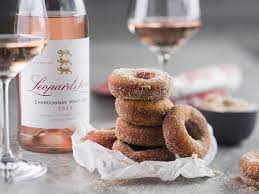
I like
to use simple, easy-to-digest sentences that anyone
can understand. For example, when we describe
Ochavado Verdejo on the Bright Cellars website, we
say it’s “Light and zingy with notes of lemon zest,
lime, dried herbs, and sea salt,” with images of
these items alongside the bottle. When it comes to
what to pair it with, grilled asparagus and crab
cakes both make the list—two things someone might be
eating at home on a weeknight. This type of language
is now appearing on Bright Cellars’ wine content, on
wine cards, on product pages and more. We have also
added everyday food pairings for real people such as
Cheetos, Glazed Doughnuts and Hot Pockets.
Low
alcohol,
zero alcohol, zero sugar brands should be
mainstream and tasty. Easier said than done. How
can this be accomplished? It runs against the
whole idea of drinking wine as a healthy alcoholic
beverage.
It
starts with broader beliefs and preferences. Gen Z
and Millennials have made it clear that they read
labels closely and care about what’s in their food
and drinks. A report last year by Food Insight found
that nearly half of Gen Z tends to purchase
beverages because they are labeled as “natural,”
one-third does so on the basis of “clean
ingredients,” and nearly one third because the
product is organic. According to online alcohol
marketplace Drizly,
wellness, moderation and health are top of mind for
Gen Z, even factoring into their alcohol purchasing
behavior. For example, two of our newest releases
are in the lower alcohol category, at 9% alcohol.
They are both delicious as is and are not
singled-out as lower-alcohol on the label. Zero
alcohol is harder to get right, but with the massive
global growth in that beverage category, and the
appealing results in gins, beers, and more, wineries
are already working hard to create a tasty zero
alcohol product.
What
about
the “Ready to Drink“ category that includes Wine
Margaritas, Wine-based Cosmos, Lemon Drops.
RTD’s
don’t have to exclusively come in cans. At Bright
Cellars, when we talk about RTDs, we mean any
wine-based cocktail that is ready to be opened and
poured, whether that’s a can, box or bottle. Recent
data from Drizly shows that this category is a
favorite of younger generations. The wine business
writ large needs to see this not as a threat, but an
opportunity, by expanding the market for wine-based
cocktails. Done right, wine stands in spectacularly
for a neutral-base spirit. We are working on a line
of wine-based RTDs offered in traditional, 750ml
wine bottles. The multi-serve opportunity that
bottles like these provide is key to accommodating
social occasions and from a price-value point of
view.
But if you switch to fun alternative,
environmentally friendly packaging such as
glass-lined plastic bottles, bag in box and cans,
that would seem to attract the lowest common
denominator.
What about eliminating cork on inexpensive wine?
Corks may be outdated but
you always get the argument that the consumer
wants the cork and hates screw caps
etc. How do you
change that perception?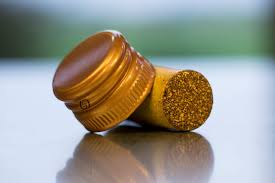
I would
agree that those over 60 may still have that
perception, but not so with Millennials. In general,
cork-finished wine it is one of the most tedious
products to open. If folks needed a special tool and
complicated technique to open a beer, would that
beverage be so popular? And don’t get me started on
those heavy “wax” capped bottles.
The
wine
industry may sell a lot of low-end wine but it
promotes premium wines and above. And restaurants
don’t carry low-end wines. How can that change?
Premium
wines need promotion, due to their price. The entry
level, under $10 retail wines, are purchased on
price, and a pleasing label. Restaurants do carry
low-end wines, but the consumer just doesn’t realize
it in many cases. In fact, low-end wines with a high
markup allow restaurants to sell higher-end wines
with a lower markup. I always recommend avoiding a
restaurant’s cheapest wine. Always go up a few
dollars. It’s a very good investment in quality.
Do
you think that lower mark-ups on wines in
restaurants will help? It seems that all
restaurateurs are committed to 200-300% mark-ups.
Restaurants mark up
food and beverages based on their business model.
Not every restaurant uses industry standard wine
markups. Look at wines on a list in Manhattan vs.
Cleveland, Las Vegas vs. Milwaukee, Paris vs.
Montpellier. Large metro areas have higher operating
costs and tend towards higher markups, just as
highly touristed areas do as well. Also, to put
things in perspective, bar programs have much higher
markups. A martini may have 2-3 ounces of premium
gin or vodka, costing the establishment less than
$1, while the cost to the consumer is $9 to $22, or
more! I do not think lower markups on wine will
help. I think better buying strategies will. The
restaurant wine buyer should be open to exploring
new grapes and regions, finding great value where
others wouldn’t have. It just takes a little more
legwork, an open mind, and support from
management/owners.
❖❖❖
 MOST
INFORMATIVE ARTICLE
MOST
INFORMATIVE ARTICLEOPENING OF THE WEEK
❖❖❖
Any of John Mariani's books below may be ordered from amazon.com.
 The Hound in Heaven
(21st Century Lion Books) is a novella, and
for anyone who loves dogs, Christmas, romance,
inspiration, even the supernatural, I hope you'll find
this to be a treasured favorite. The story
concerns how, after a New England teacher, his wife and
their two daughters adopt a stray puppy found in their
barn in northern Maine, their lives seem full of promise.
But when tragedy strikes, their wonderful dog Lazarus and
the spirit of Christmas are the only things that may bring
his master back from the edge of despair.
The Hound in Heaven
(21st Century Lion Books) is a novella, and
for anyone who loves dogs, Christmas, romance,
inspiration, even the supernatural, I hope you'll find
this to be a treasured favorite. The story
concerns how, after a New England teacher, his wife and
their two daughters adopt a stray puppy found in their
barn in northern Maine, their lives seem full of promise.
But when tragedy strikes, their wonderful dog Lazarus and
the spirit of Christmas are the only things that may bring
his master back from the edge of despair. WATCH THE VIDEO!
“What a huge surprise turn this story took! I was completely stunned! I truly enjoyed this book and its message.” – Actress Ali MacGraw
“He had me at Page One. The amount of heart, human insight, soul searching, and deft literary strength that John Mariani pours into this airtight novella is vertigo-inducing. Perhaps ‘wow’ would be the best comment.” – James Dalessandro, author of Bohemian Heart and 1906.
“John Mariani’s Hound in Heaven starts with a well-painted portrayal of an American family, along with the requisite dog. A surprise event flips the action of the novel and captures us for a voyage leading to a hopeful and heart-warming message. A page turning, one sitting read, it’s the perfect antidote for the winter and promotion of holiday celebration.” – Ann Pearlman, author of The Christmas Cookie Club and A Gift for my Sister.
“John Mariani’s concise, achingly beautiful novella pulls a literary rabbit out of a hat – a mash-up of the cosmic and the intimate, the tragic and the heart-warming – a Christmas tale for all ages, and all faiths. Read it to your children, read it to yourself… but read it. Early and often. Highly recommended.” – Jay Bonansinga, New York Times bestselling author of Pinkerton’s War, The Sinking of The Eastland, and The Walking Dead: The Road To Woodbury.
“Amazing things happen when you open your heart to an animal. The Hound in Heaven delivers a powerful story of healing that is forged in the spiritual relationship between a man and his best friend. The book brings a message of hope that can enrich our images of family, love, and loss.” – Dr. Barbara Royal, author of The Royal Treatment.
 |
The Encyclopedia of American Food and Drink by John F. Mariani (Bloomsbury USA, $35) Modesty forbids me to praise my own new book, but let me proudly say that it is an extensive revision of the 4th edition that appeared more than a decade ago, before locavores, molecular cuisine, modernist cuisine, the Food Network and so much more, now included. Word origins have been completely updated, as have per capita consumption and production stats. Most important, for the first time since publication in the 1980s, the book includes more than 100 biographies of Americans who have changed the way we cook, eat and drink -- from Fannie Farmer and Julia Child to Robert Mondavi and Thomas Keller. "This book is amazing! It has entries for everything from `abalone' to `zwieback,' plus more than 500 recipes for classic American dishes and drinks."--Devra First, The Boston Globe. "Much needed in any kitchen library."--Bon Appetit. |
"Eating Italian will never be the same after reading John Mariani's entertaining and savory gastronomical history of the cuisine of Italy and how it won over appetites worldwide. . . . This book is such a tasteful narrative that it will literally make you hungry for Italian food and arouse your appetite for gastronomical history."--Don Oldenburg, USA Today. "Italian
restaurants--some good, some glitzy--far
outnumber their French rivals. Many of
these establishments are zestfully described
in How Italian Food Conquered the World, an
entertaining and fact-filled chronicle by
food-and-wine correspondent John F.
Mariani."--Aram Bakshian Jr., Wall Street
Journal.
"Equal parts
history, sociology, gastronomy, and just
plain fun, How Italian Food Conquered the
World tells the captivating and delicious
story of the (let's face it) everybody's
favorite cuisine with clarity, verve and
more than one surprise."--Colman Andrews,
editorial director of The Daily
Meal.com. "A fantastic and fascinating
read, covering everything from the influence
of Venice's spice trade to the impact of
Italian immigrants in America and the
evolution of alta cucina. This book will
serve as a terrific resource to anyone
interested in the real story of Italian
food."--Mary Ann Esposito, host of PBS-TV's
Ciao
Italia. "John Mariani has written the
definitive history of how Italians won their
way into our hearts, minds, and
stomachs. It's a story of pleasure over
pomp and taste over technique."--Danny Meyer,
owner of NYC restaurants Union Square
Cafe, The Modern, and Maialino.
|
 |
 |
 |
 |
 |
 |
MARIANI'S VIRTUAL GOURMET
NEWSLETTER is published weekly. Publisher: John Mariani. Editor: Walter Bagley. Contributing Writers: Christopher
Mariani, Misha Mariani, John A. Curtas, Gerry Dawes, Geoff Kalish.
Contributing
Photographer: Galina Dargery. Technical
Advisor: Gerry
McLoughlin.
If you wish to subscribe to this
newsletter, please click here: http://www.johnmariani.com/subscribe/index.html
© copyright John Mariani 2023

